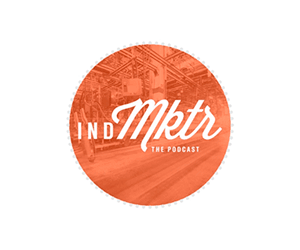Earlier this year, Google began publishing content about profit-driven marketing on its “think with Google” site. For Google, recasting marketing in terms of profit is specifically about changing how marketers think about their search advertising spend.
While it’s important to take heed of the world’s leading search engine’s official position on search marketing spending strategy, what’s daring and more interesting about Google’s statement is the change in thinking it represents, not just for search ad spending, but for marketing financials in general. The change in perspective from “marketing spend” to “profit-driven marketing” is a provocative one that raises some bigger-picture questions.
What follows is a review of Google’s statement on profit-driven marketing, an analysis of the validity of some of the ideas for industrial marketing, and some questions industrial marketers should consider as we begin to uncover some of the larger implications of thinking about marketing in terms of profit.
Google’s Version of Profit-Driven Marketing
Fundamentally, Google’s articulation of profit-driven marketing is about moving the mindset governing digital advertising spends away from an emphasis on efficiency and toward a perspective that focuses on the volume of sales that results from an online ad campaign.
In other words, don’t fetishize ROI ratios or, more narrowly, Cost per Sale. Trying to get these metrics as low as possible on average could end up sacrificing potential sales — and potential profits. Efficiency thinking, Google contends, can limit your overall profitability because there is likely a volume of customers out there that is a little more expensive to acquire, but which will still yield sales at acceptable profit margins. The profit-driven marketer’s job is to test and find the limit where profitability through marketing can be maximized.
One example Google’s strategic guide uses to illustrate this point is a hypothetical comparison between two different search bidding mentalities. Marketer #1 (the efficiency-minded one) sets a limit of $8 Cost Per Click (CPC) and acquires 30 customers at a Cost per Sale of $80 each or $2,400 total. Each of these customers has an average value of $150, meaning that the campaign yields a total profit of $2,100 ($4,500 total value minus the investment of $2,400 to acquire the 30 customers).
Marketer #2 (the profit-driven one), on the other hand, sets a limit of $9 CPC and gets 55 customers at a Cost per Sale of $90 each. The $4,950 total spent to acquire these customers yields a total value of $8,250 since they each spend $150, just like Marketer #1’s customers. As a result, the total profit for Marketer #2’s campaign ends up being $3,300.
As this theoretical example illustrates, the profit-driven approach can be better for business growth if the value per sale remains constant and there are no limits on number of sales and mandates regarding profit margin are somewhat negotiable. The additional customers and profits yielded by Marketer #2’s approach, despite the higher Cost per Sale, make a more substantial contribution to the bottom line.
While this may not work for everyone (for example, brands that depend on exclusivity), it’s an interesting exercise in testing a lot of the assumptions that govern search marketing, as well as marketing in general, in the current business climate obsessed with marketing accountability and ROI.
Profit-Driven Marketing’s Bigger Picture
Fundamentally, Google’s statements prompt us to ask: Are marketers focused on the right metrics? Do the statistics we monitor indicate real success? Further: Is the traditional marketing budget process broken?
As Google’s Matt Lawson outlines in his inaugural article summarizing Google’s stance on profit-driven marketing, changing one’s mindset to focus on profit rather than efficiency means affirming three principles:
- Measure beyond the conversion
- Bid for profit, not efficiency
- Capture demand in the moment
Measuring beyond the conversion means looking at customers holistically and quantifying this more total view of them. Lawson prompts marketers to account for offline sales motivated by digital marketing, develop a clear notion of the lifetime value of a new customer, and paint a detailed picture of how customers move between different media types as they progress along their customer journeys.
Bidding for profit instead of efficiency means, again, taking a bigger-picture view. Think about the total revenue and profit delivered by a campaign, rather than trying to optimize each transaction to achieve the best margin. In other words, put more emphasis on the return itself, rather than the rate of return.
Lastly, capturing demand in the moment means having the financial flexibility to make real-time adjustments as more customers flood the market or customer behavior changes. In this view, marketing spends should be based on real-time data, rather than predetermined annual, quarterly, or even monthly budgets.
Implications for Industrial Marketing
Google’s position is mainly concerned with search marketing and, when you consider all the example companies cited in its study (AdHarmonics, Airbnb, Autobytel), the terrain can be even further specified to the B2C e-commerce space. What then, could the benefits of Google’s version of profit-driven marketing, as well as the general shift in mindset it represents, be for industrial marketing?
In a way, none of the implications that can be derived from Google’s statements are really new to the B2B industrial marketing space. Because of the lengthy and involved nature of the industrial buying cycle, industrial marketers have always had to think about customers and their journeys in a more holistic fashion. Too, industrial marketing efforts rarely lead directly to a transaction, which means that industrial marketers have to think about a more general correspondence between marketing efforts, sales leads, and overall business growth.
This relative lack of direct correspondence between marketing efforts and a quantifiable transaction in the industrial world makes it difficult to transpose Google’s thinking directly to industrial B2B marketing. The ideal Google scenario doesn’t really exist in the industrial world. Rarely, except perhaps in the growing sector of online industrial distribution, is there going to be a situation where an online ad directly yields a transaction that has a clear dollar value associated with it.
This sort of “small picture” thinking aside, where industrial marketers will find it most difficult to follow Google’s lead is in the realm of real-time data. While digital tools have allowed us to aggregate and analyze a lot of information about our online marketing efforts, offline marketing remains opaque and many industrial sales processes remain unmapped from a basic data standpoint. B2B industrial marketing and sales processes are simply not as codified as their consumer equivalents.
Part of this has to do with the fact that the industrial space trails the consumer space when it comes to marketing and sales technology. But it also has to do with fundamental complexities of the industrial buying cycle. Because so many industrial products and services are custom by nature — which means that the sums and margins can vary widely — models that rely on average values for customer value, revenue, and profit are less useful than in the consumer space.
Without a high degree of data and predictable revenue models that are based on it to hand, it will be difficult for industrial marketers to think about “surging” their marketing budgets based on real-time analyses to capture more customers and, ultimately, more profits.
Adopting a Profit-Driven Mindset
What benefit, though, can industrial marketers derive from thinking like profit-driven marketers, as Google defines the mindset? At the very least, we can use the bases of this stance to expand our current thinking of marketing.
For one, the idea of profit-driven marketing puts what has become rote institutional thinking about marketing on its head. Just the phrase “profit-driven marketing” affirms that marketing can be a vehicle for growth and increased profit, rather than a necessary expense that needs to be optimized (and, too often, minimized).
Second, profit-driven marketing, at least as Google defines it, puts a strong emphasis on data — and turning data into actionable information. Data analysis focused on maximizing profit will not only benefit a company’s marketing program, but will unequivocally improve a company’s overall financial well-being.
If you’d like to learn more about the potential of profit-driven marketing for industrials or are interested in how we at Industrial Strength Marketing think about marketing for industrials in general, leave a comment or drop us a line at 1-866-529-8908.




